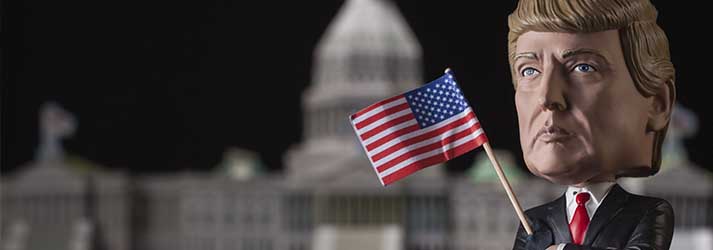Despite the news that the US economy had contracted for the first time since 2014 during the first quarter, US equity markets ended April in positive territory in April as investors began to focus on the end of lockdown measures and the reopening of the economy.
- The Fed expects an “unprecedented” economic contraction in Q2
- The Nasdaq Index narrowed its YTD loss to only 0.9%
- The Democratic Party endorsed Senator Joe Biden as its Presidential candidate
To view the series of market updates through April, click here
Despite the news that the US economy had contracted for the first time since 2014 during the first quarter, US equity markets ended April in positive territory in April as investors began to focus on the end of lockdown measures and the reopening of the economy. The World Health Organisation (WHO) reported over one million cases of COVID-19 in the US by the end of April – the largest number in any country to date – with 52,428 deaths recorded. During the month, President Trump set out plans to reopen the US economy. The Democratic Party endorsed Senator Joe Biden as its Presidential candidate ahead of November’s elections as Senator Bernie Sanders exited the race.
“The rate of unemployment increased sharply”
Technology stocks performed well during April: the Nasdaq Index rose by 15.4% over the month, narrowing its year-to-date loss to only 0.9%. In comparison, the Dow Jones Industrial Average Index rose by 11.1% in April but fell by 14.7% since the start of the year, while the S&P 500 Index posted a monthly increase of 12.7% and a year-to-date decline of 9.9%. The S&P 500 Index’s rise of 12.7% was the index’s best monthly performance since January 1987’s rise of 13.2%, according to S&P Dow Jones Indices.
The US economy shrank at an annualised rate of 4.8% during the first quarter of 2020, having expanded by 2.1% in the final quarter of 2019. This was the country’s first quarter of negative growth since the first three months of 2014, and there are fears that a second-quarter contraction could prove even deeper as the impact of lockdowns takes full effect on the economy.
Retail sales fell by 8.7% month on month during March, and consumer spending slumped. The savings rate surged from 8% to 13.1%, reflecting consumers’ unease. 701,000 jobs were lost in March, and the rate of unemployment increased sharply, rising from 3.5% in February to 4.4% in March.
Investors were heartened by the Federal Reserve’s (Fed’s) pledge to continue to provide support until officials are “confident that the economy has weathered recent events”. Nevertheless, Fed Chair Jerome Powell remained cautious: he believes the drop in second-quarter economic growth is likely to be “unprecedented”, and warned that the pandemic “will weigh heavily on economic activity, employment, and inflation in the near term, and poses considerable risks to the economic outlook in the medium term”.
A version of this and other market briefings are available to use in our newsletter builder feature. Click here




